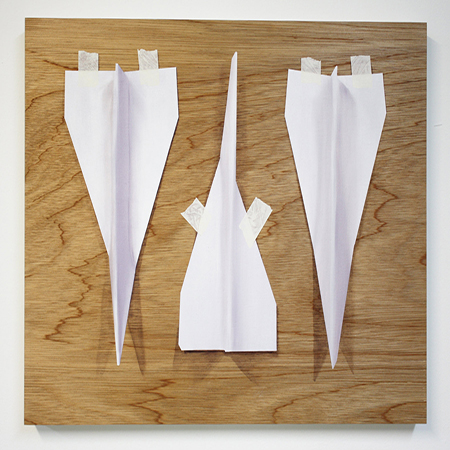TRICK OF THE EYE

The trompe l’oeil genre of painting has often been regarded as the poor cousin to more grown-up relations such as figuration or abstraction, yet several contemporary painters in Northern Europe are returning to the language of illusionism as an altogether serious way of exploring more contemporary questions of painting.
Illusionistic painting finds its roots in the rhyparos paintings of everyday waste in ancient Rome. Later, xenia paintings in Pompeii replicated domestic objects such as jars, plates and flowers, painted in low relief, directly on to the walls for the amusement of well-to-do Roman officials. Yet the term trompe l’oeil didn’t really appear until the 17th century and the grandiose murals of the Baroque period.
Despite its whimsical pretensions, Dutch artists such as Edward Collier and Flemish painter Cornelius Norbertus Gijsbrechts saw greater potential in the genre as a vehicle for political subversion. Collier’s rack paintings rendered artefacts highly charged with anti-partisan messages to appear as pinned or strapped to a wooden board. Dror Wahrman comments, “Deceptions for Collier were not merely an artistic skill… rather a critical tool, a means for revealing as well as concealing.” Take a closer look at Collier’s rack paintings and his politics are thinly veiled. What better way to reveal the false promises of a king than to paint a copy of his speech in a medium associated with fakery and deception?
Hyper-real trompe l’oeil painting mimics the real to such an extent that it questions the veracity of the subject itself. As Norman Bryson writes in his seminal book, Looking at the Overlooked, “Normally, painting controls the contents of the visual field by means of a sovereign gaze… but in trompe l’oeil it is as if that gaze has been removed, or had never been present.”
Yet contemporary painters such as Lucy McKenzie, Kees Goudzwaard, Hugh Mendes and David Musgrave see new potential in trompe l’oeil as a way of approaching contemporary questions of replication, authenticity, digitization and the way in which artists utilize source materials and perhaps assisted by modern advances in painting technology that can offer a heightened sense of realism compared to more traditional applications of egg tempera and oil based paints. McKenzie has uncovered an almost forgotten sub-genre of trompe l’oeil painting called quodlibetic (what you will) where objects are painted to appear as they might have fallen at random on a table or corkboard.
This lowly genre of painting, then, is highly ambivalent and certainly deserving of a second look.
Dror Wahrman, Mr. Collier’s Letter Racks: A Tale of Art and Illusion at the Threshold of the Modern Information Age published by Oxford University Press, 2012, page 8.
Norman Bryson, Looking at the Overlooked, published by Reaktion Books Ltd, 1990, page 143

